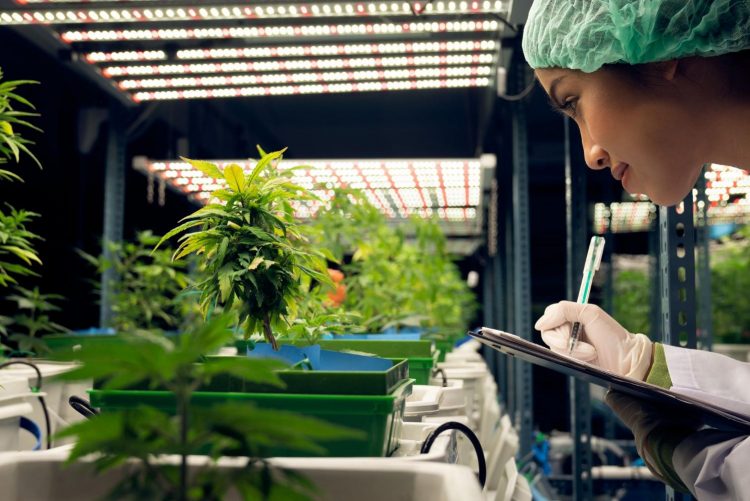There are many names and terms describing different parts of plants, operations, or processes in the hemp industry. And when it comes to hemp, usually it is more confusing, right? Well, first of all, we are talking about fiber hemp, or in other words industrial hemp, that is legal in most countries, because it is not psychoactive and doesn’t make people high. This introduction we share all the time because this industry still faces a lot of restrictions and fairs, all this happens because of a lack of information. So, in this article, we get to know more about hemp biomass.
What is hemp biomass?
Hemp biomass is an organic material received from hemp plants. Usually, it is the biological material left over from the harvesting of cannabis flowers. These can be the plant’s stems, seeds, and leaves, which also are valuable as there are enough compounds to use for various purposes. Hemp flowers are considered biomass after extraction as the cultivators grow hemp flowers very carefully, and harvest them separately for their high CBD content.
And after 2018 the Farm Bill saw the daylight, and farmers could legally grow and produce hemp, from all its parts, some cultivators became rich over a night, as they could sell hemp crops as biomass.
Hemp biomass is processed into various products and extracts. This includes CBD oil, food ingredients, textiles, and other industrial materials. Hemp biomass is very well known in the biofuel industry, plastics, and other sustainable materials. The versatility of hemp biomass makes it an attractive source for many different industries, including health, agriculture, and energy.
The main reason and purpose for growing Cannabis Sativa plants are hemp flowers, due to their unique structure and the large amount of CBD found in them, which is considered the most valuable. However, the yield of hemp flowers is small compared to the rest of the hemp crop, and hemp growers are unable to meet the current demand for CBD in the market.
As we know, CBD is considered to be extremely valuable, and in recent years there have been many scientific studies confirming its benefits. Therefore, manufacturers have discovered ways to extract CBD from hemp biomass to meet market demand. You will be surprised to learn that hemp biomass contains between 5% and 15% CBD, and this amount is enough to extract CBD and produce other valuable hemp products.
What are the advantages of hemp biomass?
As mentioned above, hemp biomass is a super versatile material used in various industries. The beauty industry uses hemp to make and enrich face creams, body lotions, and more. The high cellulose content in hemp allows them to be used in the production of biodegradable plastics. And of course, the paper industry, as hemp fiber can replace wood, saving decades of forest growth. Hemp biomass is a valuable source of renewable energy that can be used as a sustainable fuel alternative.
The hemp plant is very adaptive due to its natural defense mechanism, so the plant itself increases soil fertility by releasing beneficial minerals into it and acting as an all-natural mulch, and it also protects itself from adverse natural phenomena by creating its own natural pesticides. All these advantages of hemp biomass prove that it is a valuable raw material for both business and the environment.
What can be made from hemp biomass?
Hemp biomass is divided into CBD biomass and Hemp Fiber Biomass.
CBD Biomass
It is hemp biomass containing 5-15% CBD from which CBD can be extracted and other related products made. Currently, in supermarkets or specialty stores, you can find a large range of hemp products, such as food products: hemp seed oil, hemp tea, hemp flour, CBD oils, and other supplements. You can enjoy cosmetics with hemp additives: face creams, lotions, shampoos, etc.
Hemp Fiber Biomass
Hemp biomass does not contain enough CBD for extraction. This type of biomass is industrially harvested and processed. Hemp fiber is very well known and used in the construction, textile, and renewable energy industries. Bioenergy has rapidly gained market share in the global drive to reduce dependence on fossil fuels. Most biofuel crops negatively impact the environment, require too much water, or produce harmful substances. Meanwhile, industrial hemp is a valuable resource that is mostly resilient, requires minimal maintenance, and has little or no negative impact on the environment.
Hemp biomass is used to produce hemp paper, bioplastics, insulation materials, and other industrial products. When hemp is grown for these specific purposes, the same regulation that is required for food or wellness hemp products does not sound fair. There is still a lack of clear legal regulations on various issues related to cannabis, but as demand increases and the market develops, new technologies and applications emerge, and such regulations and clarifications will inevitably appear.









